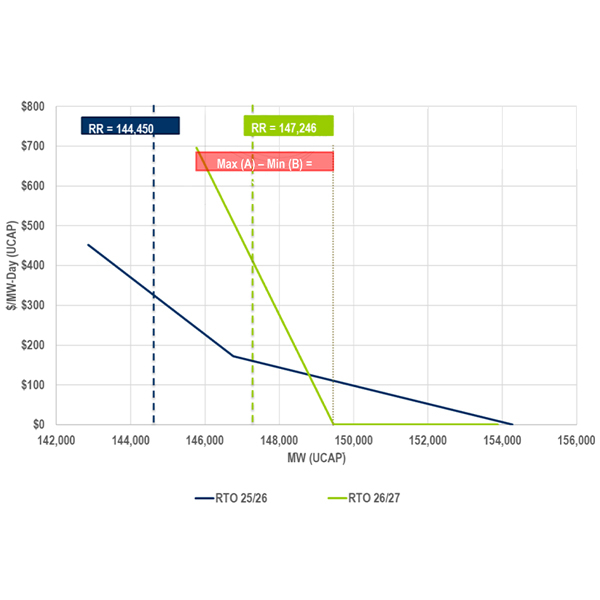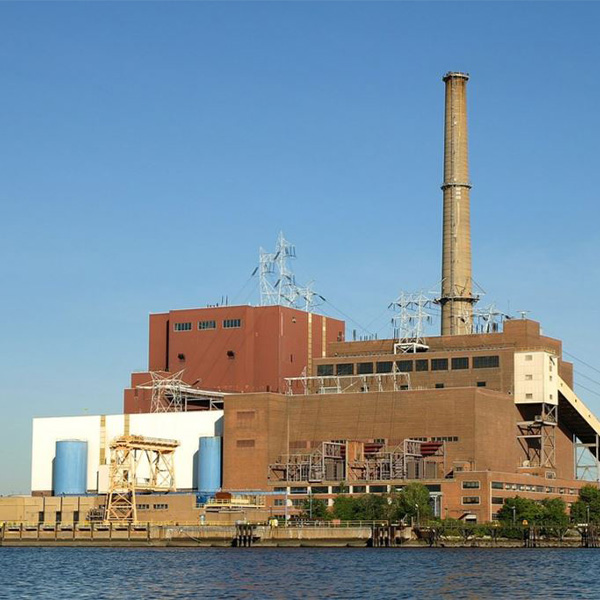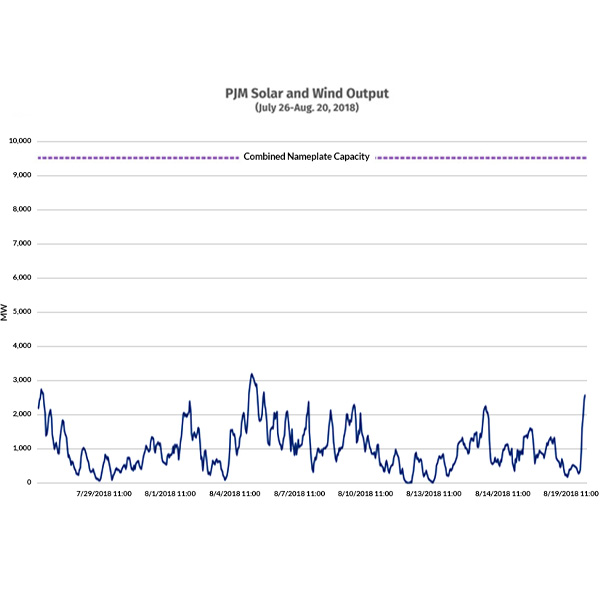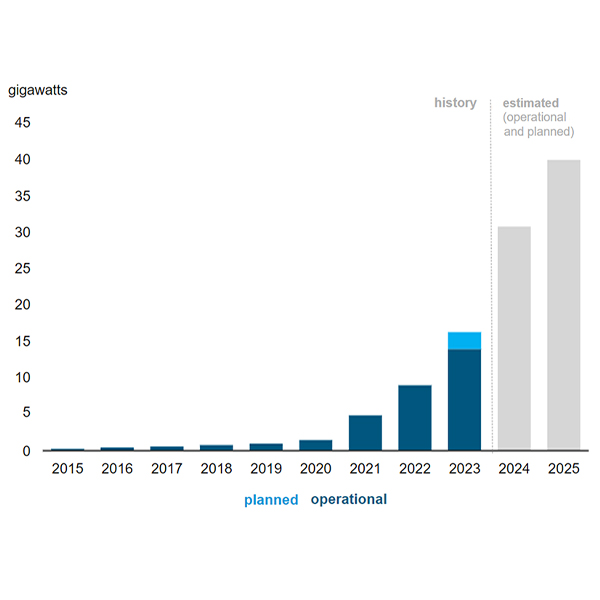battery energy storage systems (BESS)
NYISO presented its final interim staff recommendations for the demand curve reset for 2025-2029 at the Installed Capacity Working Group’s meeting, with minor updates to some metrics.
PJM presented how the planning parameters for the 2026/27 Base Residual Auction affected the variable resource rate curve, which intersects with supply and demand to determine auction clearing prices.
NYISO analysts continue to recommend a two-hour battery electric storage system resource as the proxy unit for the ISO’s capacity market demand curve.
A new report from NERC and the National Academy of Engineering explored the shortcomings of traditional resource adequacy metrics and alternatives under development.
NYISO stakeholders are divided over consultants’ proposal to use a two-hour battery as the peaking plant in the ISO’s capacity market demand curve, as part of its quadrennial demand curve reset for 2025-2029.
With a capacity of 220 MW and 880 MWh, the Trenton Channel Energy Center is expected to be the largest standalone battery storage site in the Great Lakes region when completed in 2026.
A developer has committed to replacing a fossil-fired peaker plant with a lithium-ion battery system that will, for a while, be New York City's largest.
Carbon-free electricity proponents envision a massive portfolio of wind and solar generation supported by some type of storage. In theory this can work, but the reality is that long-term battery storage isn't practical.
The promise of doing well for both the environment and the economy and the obstacles to doing so were highlighted as the 2024 edition of New York’s energy storage industry conference opened.
With electricity demand expected to undergo rapid acceleration by 2028, stakeholders must “pursue the full range of technology, planning and operation solutions” to meet resource adequacy needs, the DOE said in a report.
Want more? Advanced Search









